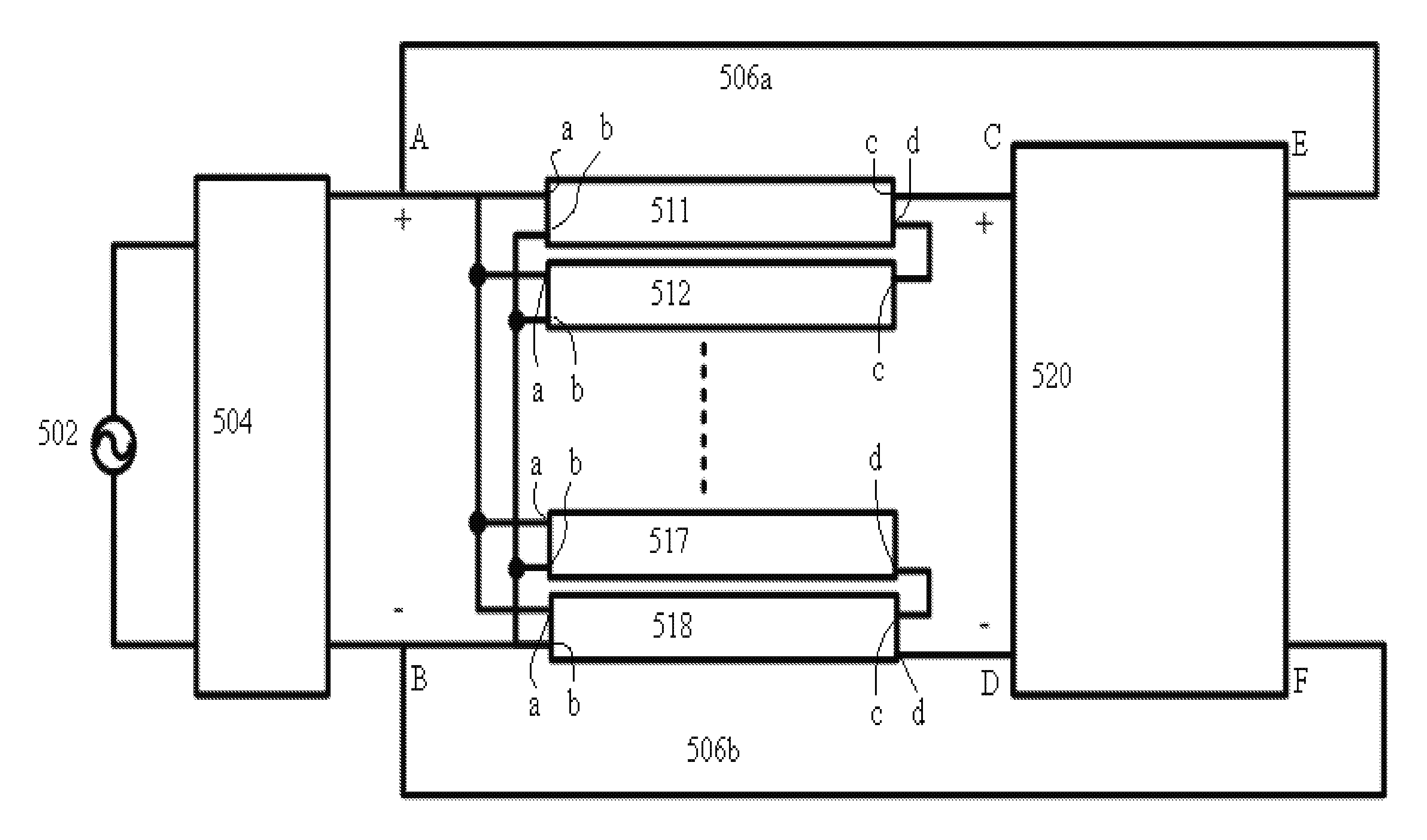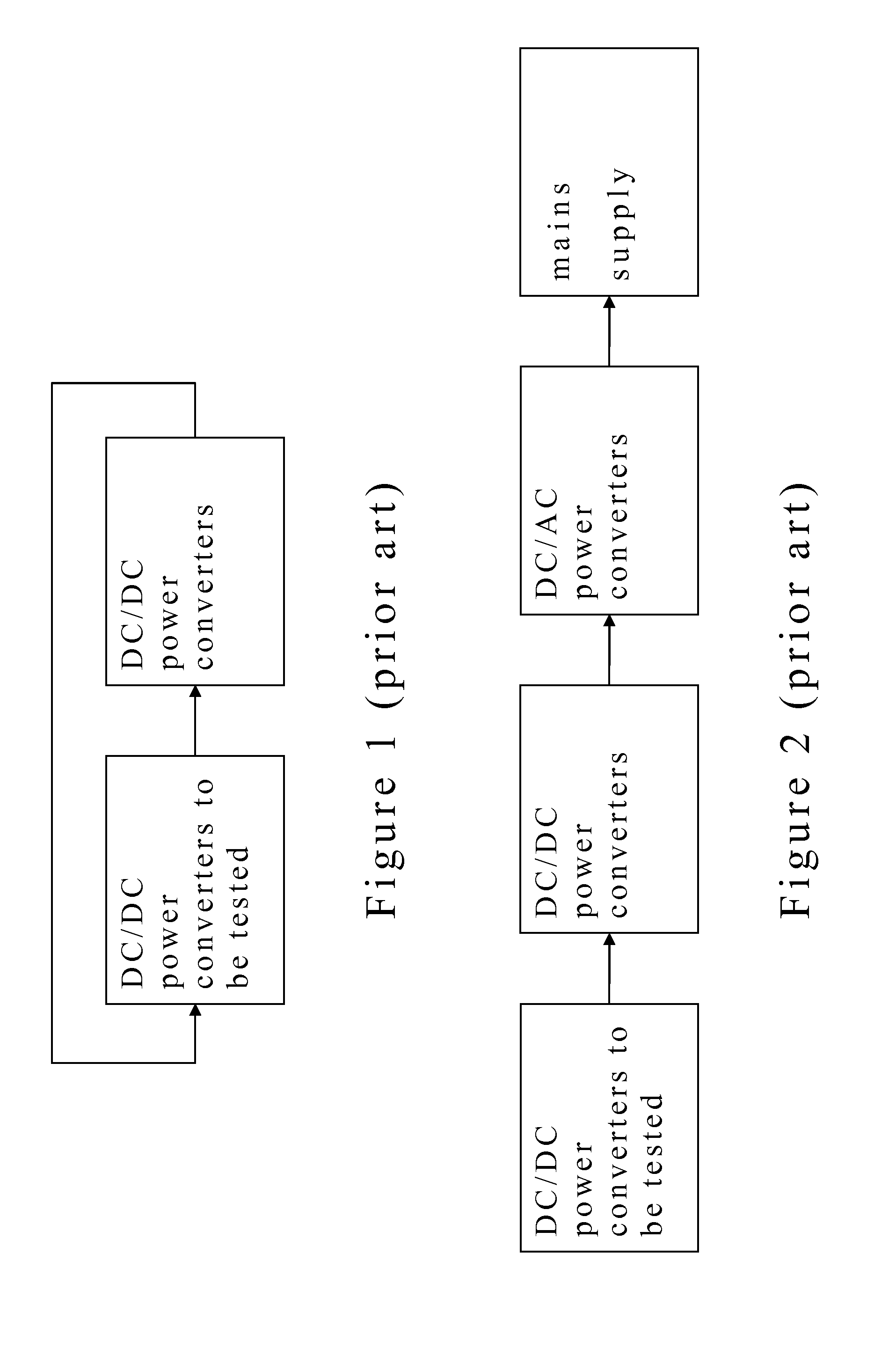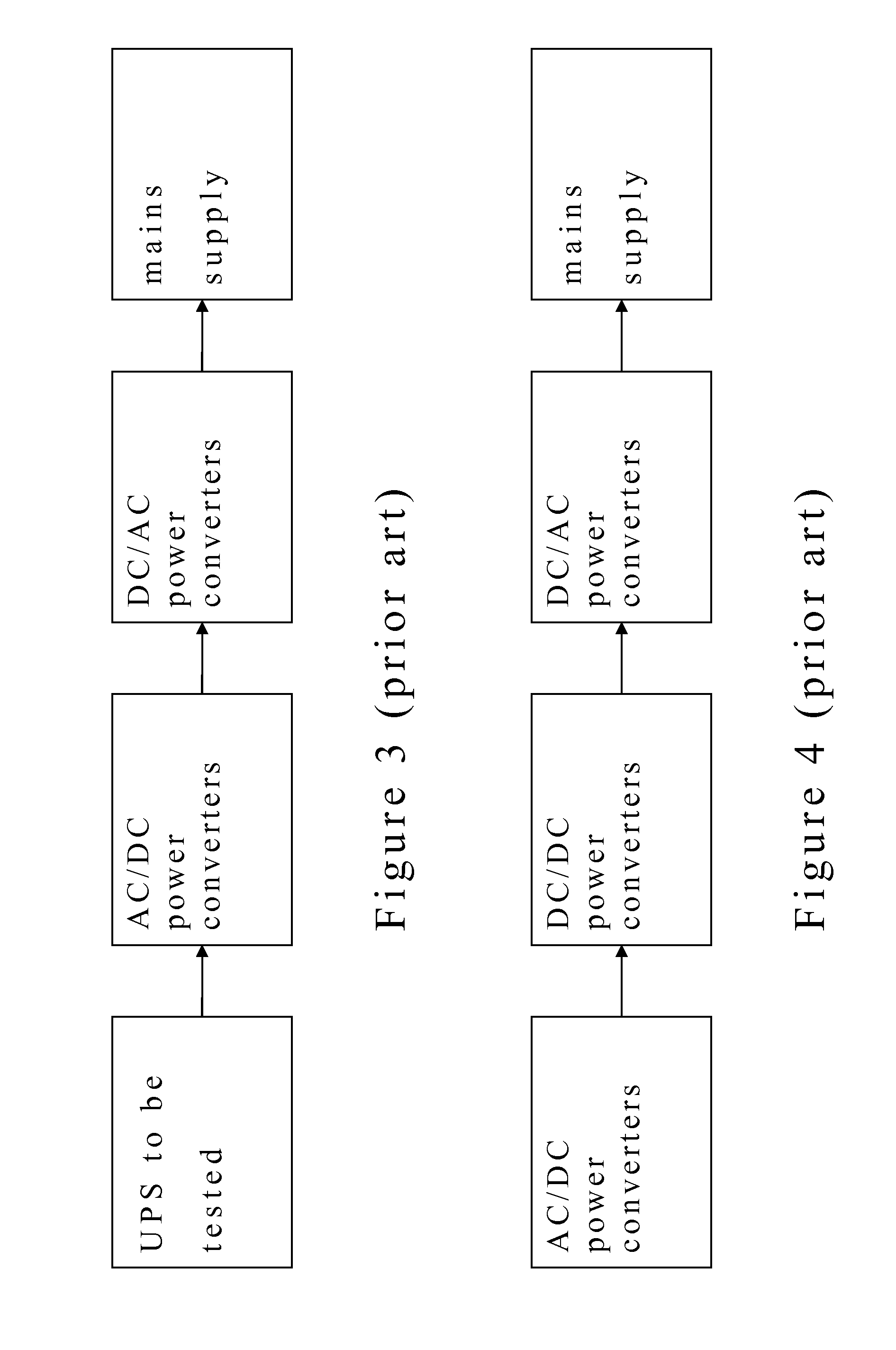Burn-in test apparatus with function of energy recycling
a test apparatus and energy recycling technology, applied in the field of burnin test apparatus, can solve the problems of increasing cost, affecting goodwill, unstable testing current, etc., and achieve the effects of reducing manufacturing cost, high energy recycling ratio, and simplifying control and circui
- Summary
- Abstract
- Description
- Claims
- Application Information
AI Technical Summary
Benefits of technology
Problems solved by technology
Method used
Image
Examples
Embodiment Construction
[0024]FIG. 5 illustrates a structure of a burn-in test apparatus on the basis of an embodiment of the invention. FIG. 5 shows a burn-in test apparatus including an AC / DC power converter 504 and an active electrical load 520, wherein the AC / DC power converter 504 can be a full-bridge rectifier, and the active electrical load 520 can be a DC / DC power converter.
[0025]AC / DC power converter 504 mainly employs a full-bridge rectifier to convert the alternating current of the AC power source 502 of the mains supply to direct current, which is then supplied to the input ends (a, b) of one or more power converters (511˜518). The voltage of the current into the one or more power converters (511˜518) is regulated by the input capacitors inside the one or more power converters (511˜518).
[0026]In an embodiment of the invention, to test multiple power converters (511˜518) and reduce the test duration, the input ends (a, b) of power converter (511˜518) are connected in parallel and the output ends...
PUM
 Login to View More
Login to View More Abstract
Description
Claims
Application Information
 Login to View More
Login to View More - R&D
- Intellectual Property
- Life Sciences
- Materials
- Tech Scout
- Unparalleled Data Quality
- Higher Quality Content
- 60% Fewer Hallucinations
Browse by: Latest US Patents, China's latest patents, Technical Efficacy Thesaurus, Application Domain, Technology Topic, Popular Technical Reports.
© 2025 PatSnap. All rights reserved.Legal|Privacy policy|Modern Slavery Act Transparency Statement|Sitemap|About US| Contact US: help@patsnap.com



